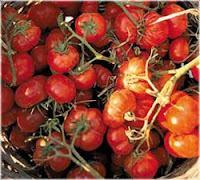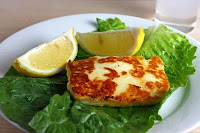The spectrum of traditional Greek cuisine is very wide and indigenously rooted in thousands of years of history being at the same time heavily influenced by the countries. Much of the cooking in Greece relies on fresh ingredients, olive oil, herbs and spices. Requiring much more than rudimentary skills, at its best, Greek cuisine becomes an art form.
The traditional eating and meeting point in Greece is the tavern. When in tavern you may start with
saganaki (fried chesse) as a starter, continue with
psarosoupa (fish soup) and
horiatiki the famous Greek salad topped with feta cheese and olives and as a main dish have either fish such as
barbounia (red mullet) or
mousaka ( aubergine and minced lamb or beef, topped with a béchamel sauce and baked). Most traditional taverns serve now much more than fresh fruit as dessert and you may have
kataifi (flaky pastry bowl covered with honey and cinnamon) and pastry of all kinds.
Among the other places in which to eat and drink are the ouzeri and the tsipouradiko. Each dispenses ouzo or tsipouro and it is customary to nibble at a selection of local specialties mezedakia pikilia.
I will try to show you a traditional Greek dishes and Mediterranean fusion cooking equally fresh and tasty but with a modern touch. Each Greek island has his unique traditional delicacies.

Tomatokeftedes or psefokeftedes
(tomato balls) is a traditional dish of Santorini. It is a very popular appetizer on the island and its preparation is similar to the preparation of meatballs. Usually come in a small dish with 4 to 5 tomatokeftedes in it.
Tomatokeftedes are very tasty not only because they are done with fresh vegetables but because they are cooked with “waterless tomato”. They come in a different species, and it comes in a two varieties. There is the original type, where the rounded sides of the tomato are fluted vertically, like fruit, and there is the “Kos” type that does not have any flutings. They are smaller than normal tomatoes, but somewhat larger than the real cherry tomatoes. Grown under burning sun preserving the humidity in the air they are very very tasty.
The plan bears more tomatoes than a normal tomato plant, grow fast and early in the year and most of all doesn’t require water. The small tomatoes contain a large amount of vitamin C and lycopene.Lycopene is a carotenoid with twice the antioxidant activity of beta-carotene (the precursor of Vitamin A contained in carrots, pumpkins etc.) and ten times that of alpha-tocopherol (a generic name for Vitamin E). It is a preventive agent for all kinds of cancer, especially the so-called epithylial cancers - cancers of the skin and some membranes – and it is only lycopene, out of all carotenoids, that can help to prevent breast cancer. It also works in potential cases of atherosclerosis by protecting plasma lipids against oxidation.)
The same lycopene have in Mediterranean olive oil. So the combination of the small Santorini tomato with olive oil in the recipes below should lead to both a tasty and a healthy meal.
 INGREDIENTS for 6 servings
INGREDIENTS for 6 servings
